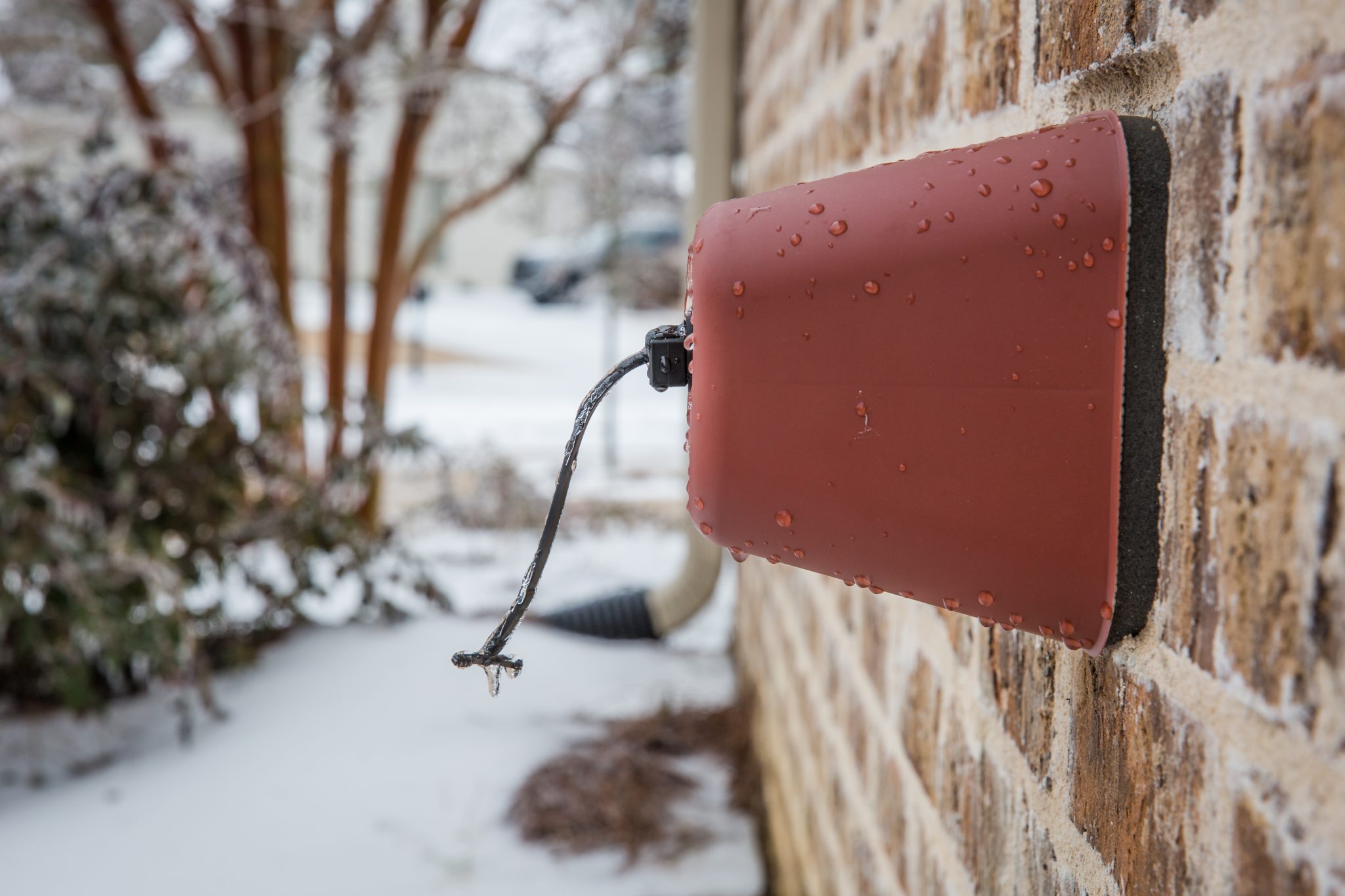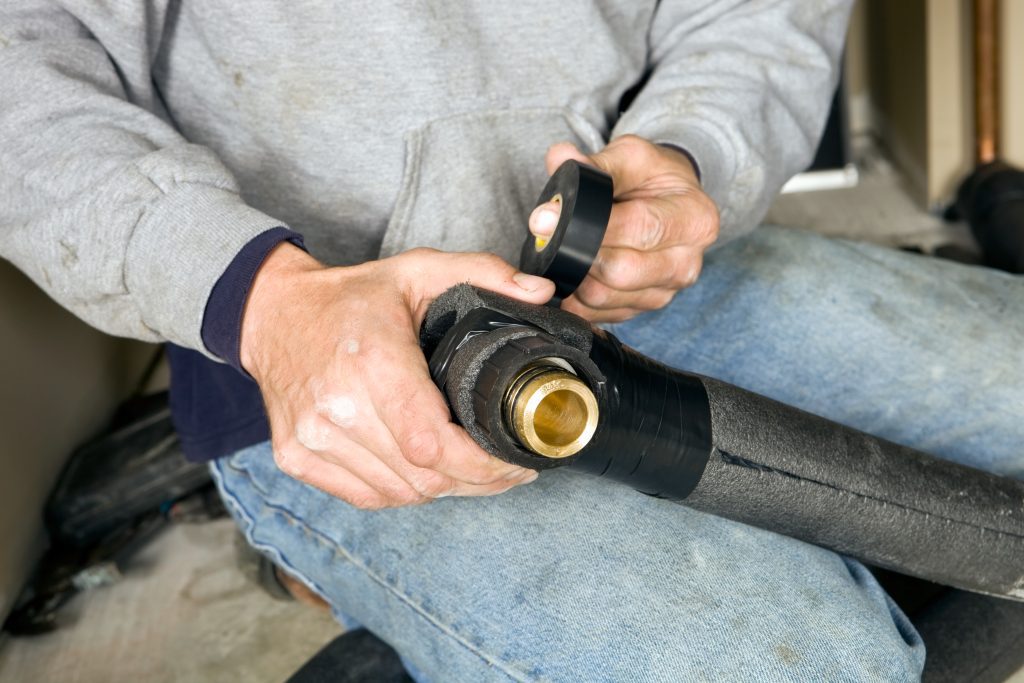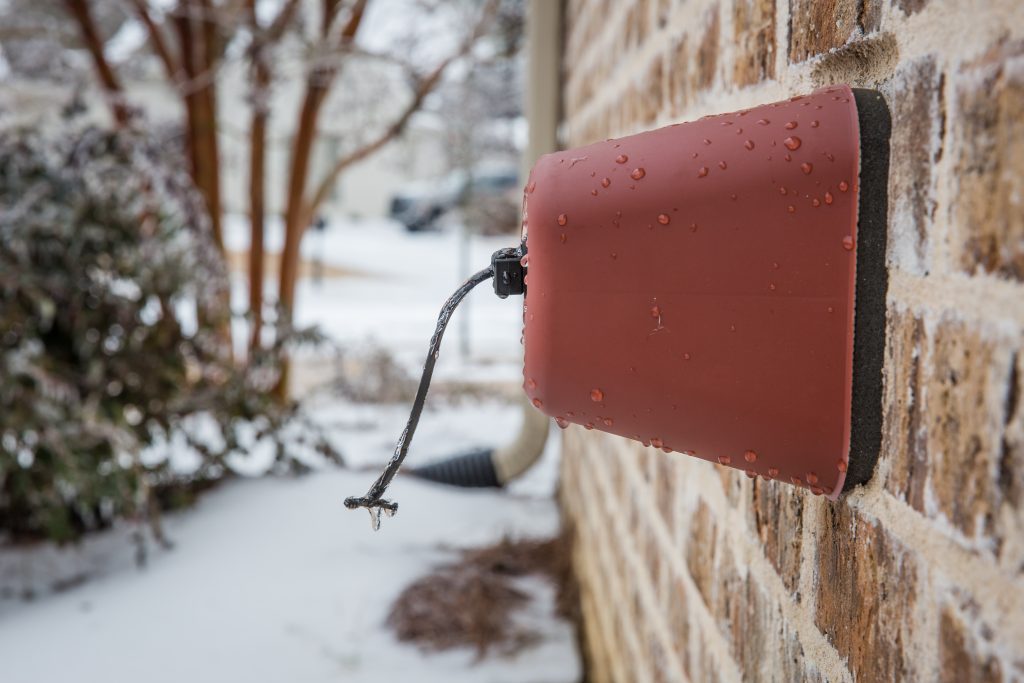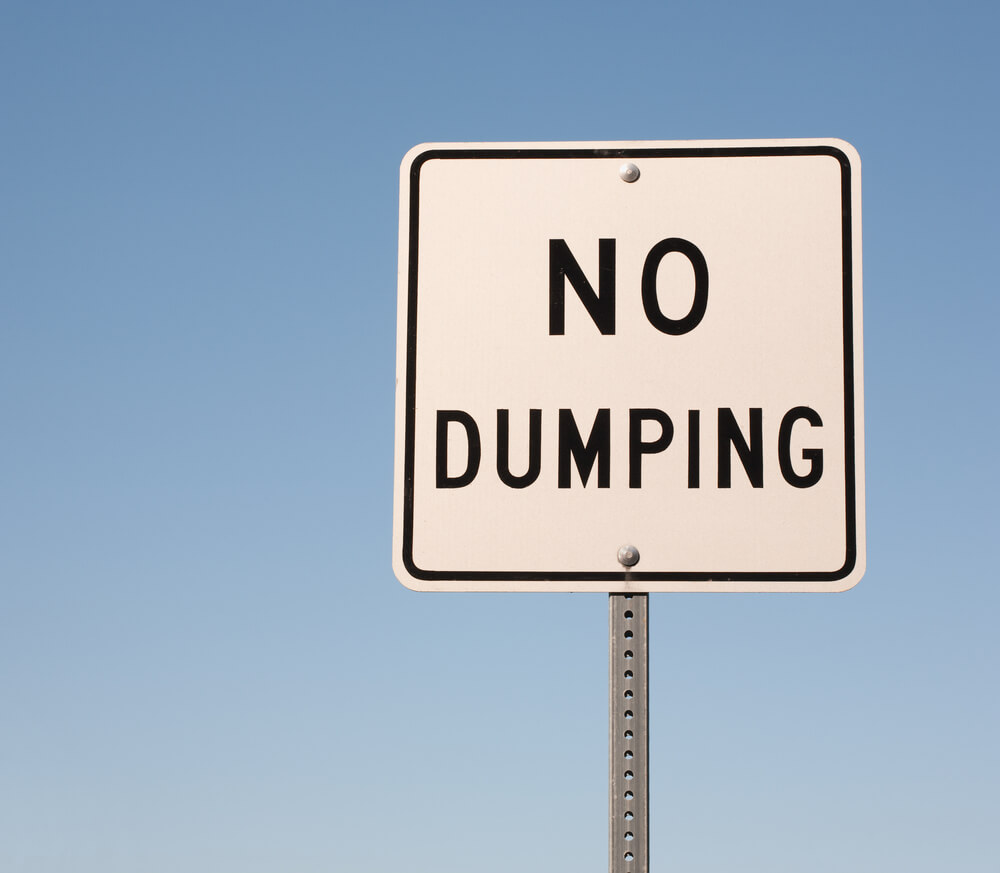Knowing how to prepare for a Texas freeze can save you from the hassle of dealing with insurance claims or spending thousands of dollars on home repairs. It can also give you peace of mind when the weather goes from a balmy 70° F to Texas snowpocalypse in a matter of a few days.
Part of knowing how to prepare for a Texas freeze is making sure that your home is prepped for freezing temperatures. In particular, it’s important that you take steps to protect your home’s pipes from freezing and bursting, as this can lead to water damage and costly repairs.
This guide to how to prepare your home for a freeze covers what homeowners can do far in advance of a freeze, directly before a freeze, during the freeze, and after the freeze to keep your home safe and sound when temperatures drop.
If you’re preparing a place of business for a natural disaster like a freeze, please see our resources on creating a disaster relief plan and business continuity during natural disasters.
Before the freeze
When preparing your home for a freeze, it’s best not to leave everything to the last minute. In fact, some of these steps can actually be taken months in advance of a freeze. That said, what is most important is that you do what you can, when you can.
0. Make sure your home is properly insulated
We have this as step “0” because we recognize that it’s unlikely anyone looking at this article will have time to deal with this step of the process before a freeze hits. Consider this your nudge to put checking your home’s insulation on your to-do list ASAP. If you’re not sure how to check how well your home is insulated, have your energy company audit your home. Some local utility companies will do this for free.
Since we live in a warm state, it’s easy to forget about places where the cold winter air could seep in until it’s already happening — but fixing them can not only save you money, it can save your life.
1. Protect your water pipes
If you’re a homeowner looking for how to prepare for a winter storm in Texas, one of the most important things you can do is take care of your home’s pipes. Pipes exposed to freezing temperatures can turn into frozen pipes, and frozen pipes can burst. Once the weather begins to warm up, water can leak through that burst pipe, causing severe water damage to your home. Here’s how to keep that from happening.
Indoor pipes:
- Insulate indoor pipes that are located in unheated areas. Common culprits include pipes exposed to freezing cold air in your garage, attic, and basement, as well as pipes located inside exterior-facing walls of your home.
- Pipe-wrap insulation is inexpensive and available at most hardware stores.
- Another alternative for keeping your pipes warm is heat tape. Heat tape is actually a cable that you can run the length of your pipes and plug in. Keep in mind that it is only useful if your home has power and is often installed by a professional.
- If you’re reading this in the middle of a freeze, use old clothes and blankets to insulate your pipes — don’t try driving to a hardware store on icy roads. Most Texans aren’t used to driving in icy conditions. Even if you’re prepared, they might not be.
- Drain house fire sprinklers if you have them.
- If your washer is in an unheated garage, turn off the water to that area.
Outdoor pipes:
- Insulate outdoor pipes. See above for tips.
- Disconnect, drain, and store water hoses.
- Cover the hose faucet and any other outdoor faucets with outdoor faucet covers.
- Turn off and drain your lawn sprinkler system.
2. Locate your water shut-off valve and your water meter
If a pipe bursts during a freeze, you will need to locate and turn off the water shut-off valve. Doing so will keep water from gushing into your house when the pipe thaws. In Texas, many water shut-off valves are located in your front lawn, but they may also be found in your garage, near your water heater, in a crawl space, or elsewhere.
Make sure that the valve can be easily turned. If it is stuck, call a plumber to replace it.
In case you need to shut off the water to your home but can’t use the water shut-off valve, check your city’s water department regulations to see if there are any restrictions on shutting the water off in your water meter. If there are, call your city’s water department emergency number for help.
If there are no restrictions, locate your water meter and turn the water off there. It’s easiest to do this with a water meter key (which you can get at most hardware stores) but it can also be done with a crescent wrench and a screwdriver.
3. Clean out your gutters
Gutters full of leaves and other debris can increase the likelihood of ice forming on your roof. Roof ice can lead to ice dams and thermal shock caused by the ice melting and refreezing, which can lead to costly repairs. So take a moment to get out your ladder and clean out your gutters before a freeze.
4. Run through this maintenance checklist
-
- Check the exterior of your home for small holes and cracks. These can be sealed with caulk, foam, or weather stripping.
- Store lawn equipment. Put items in a sheltered space like a garage or a shed. To keep mechanical equipment in especially good condition, wrap the cords or drain the gas.
- Spray ice repellant on your front steps. Falls down slippery stairs are only funny in the movies.
- Dump water out of birdbaths and fountains. Add it back once the weather thaws.
- Take care of your plants. Bring small potted plants indoors, cover larger potted plants, and add mulch around trees and bushes.
- Purchase supplies for heating and safety. These may include wood, coal, propane, or fuel depending on how you heat your home. Stock up on batteries and make sure you own a working flashlight.
- Check your fireplace and chimney. Schedule a cleaning if you aren’t sure how to do it yourself or if it has not been professionally cleaned in a while.
- Cover or remove window A/C units.
- Check your thermostat. Is it working properly? Does it need batteries? If you tend to set and forget your thermostat, it’s a good idea to give it the once-over before a freeze.
5. Research insurance coverage and fill in the gaps when possible
Once you’ve gotten your home ready, take a little time to check whether your home or rental insurance covers common damages caused by a freeze.
Ask your agent about the following:
- Sudden and Accidental Water Damage: If your policy covers sudden and accidental water damage, that will cover damage caused by pipes that burst during a freeze.
- Note that some insurance policies, including those that protect against sudden and accidental water damage, may not cover damages caused by burst pipes if you did not take steps to protect them.
- Flood insurance does not cover damage caused by burst pipes.
- Note that some insurance policies, including those that protect against sudden and accidental water damage, may not cover damages caused by burst pipes if you did not take steps to protect them.
- Food Spoilage: If you lose power during a freeze, the food in your refrigerator may have spoiled. If the power loss was caused by something your insurance covers, they may pay you a certain amount back (generally around $500). Make sure that you document the food that is spoiled with photos and lists.
- While you’re at it, stockpile non-perishable food in your pantry and snag a manual can opener if you don’t have one.
6. Don’t leave town without turning the heat on and the water off
We wouldn’t blame you if you planned on leaving town ahead of the next Texas snowmaggedon. But if you do, make sure that you turn the heat on, shut the water off (using the water shut-off valve), and drain any of the systems we mentioned draining above. That way, you significantly reduce the chance of a pipe bursting while you’re away. Better safe than sorry!
During the freeze
If you skipped to this section because a freeze has already hit, make sure you go back and skim the information on “before the freeze,” as there are many things included there that you can still do to protect your house, even last-minute.
1. Continue to protect your pipes
If you’ve insulated your pipes — or even if you haven’t — the following can go a long way toward reducing the likelihood that they’ll burst.
- Open the cabinets under your sinks. This exposes the pipes to the warm air in your house.
- Let your faucets drip. Turn on BOTH the hot and cold taps (or set single taps to the middle setting). The constant drip helps relieve any pressure that might build up between an ice blockage and your faucets, reducing the likelihood of a burst. Even if a pipe is frozen completely and no water comes out, keeping the faucet open gives the water somewhere to go when it thaws, which also reduces the likelihood your pipes will burst.
- Check local government regulations about water usage during freezes.
- Set your icemaker to run. This is mostly important if your fridge’s water line runs under your house.
- Check your pipes periodically. Prioritize pipes in places that are more exposed to the cold, such as pipes leading to appliances in a garage.
If your pipes freeze (but don’t burst) turn off the water at the shutoff valve or, barring that, the water meter, as described above. Leave your faucets open.
2. Run through this maintenance checklist:
So much of keeping your home safe during a freeze involves keeping it warm and making sure that you keep as much heat as possible inside. Here are some ways to keep you and your loved ones (and your house’s pipes!) warm.
- Shut the garage door. This may be an easy step for some, and it might involve some rearranging for others. But if your garage is attached to your house, you can save a lot on heating (and cooling) just by keeping this space closed off.
- Use draft snakes. Put them under and against doors and on windowsills.
- Shut drapes/blinds. Unless they’re receiving direct sunlight, shutter your window with whatever window dressings you have. This adds an extra layer between your home and outside.
- Run ceiling fans clockwise. If you run ceiling fans on low and in “reverse,” it actually circulates warm air.
- Remove snow from plants. Gently remove snow from your plants so that branches are less likely to break. Use a broom and sweep in an upward motion.
After a freeze
You’ve learned how to prepare your home for a freeze in Texas — but what about after the freeze has passed? Don’t let all your hard work go to waste by not following up on a few key places in your home.
1. Conduct a walkthrough
Check over your home for signs that your pipes have burst. You’ll need to use most of your senses, as leaks may be occurring out of sight. Be extra vigilant in laundry rooms, kitchens, bathrooms (as well as rooms nearby), and unheated spaces like garages, basements, attics, and crawl spaces. Don’t forget to check outside, too.
- Look: Yes, you’ll need to look for dripping or pooled water, but also check for wet spots on the wall, including damp drywall and wet spots on the ceiling.
- Listen: Listen for unusual banging, bubbling, clanks, or whistling sounds.
- Smell: It could take a day or two for odors to set in, but if they do, a burst pipe may be to blame.
In areas where you can easily see exposed pipes, check to see if they’re covered in frost or condensation, or if there are any bulging areas that might indicate a buildup of ice.
Don’t move on to step two unless you’ve thoroughly checked your home.
2. If your water was turned off, turn it on and run the faucets
Once you’ve completed step one, it’s time to make sure that your plumbing is in working order. Go through each of the rooms in your home and turn on both faucets and run them for a few seconds each. Check for water pressure, discoloration, and odor. Flush all the toilets to make sure there are no issues. Again, don’t forget to check outdoor water faucets and spigots.
3. Use your water meter to double-check for leaks
Some leaks are small and hard to notice but can compound over time. To make extra sure that your pipes are still in good condition, you can use your water meter to check for leaks (again, typically located in the front yard).
- Turn off all faucets. Make sure the dishwasher and washing machine aren’t running.
- Read the meter. Note the usage.
- Wait 15-30 minutes, then read the meter and note the usage again.
If the usage changed at all, that’s a sign that you might have a hard-to-stop leak and might need to call a plumber.
4. Inspect the roof
Do not go on your roof if it is at all frozen. Once everything has thawed, take a moment to make sure that water hasn’t pooled somewhere on your roof and that you have not incurred any damage from falling tree limbs.
Need help after a Texas freeze? Texas Disposal Systems is here.
We hope this homeowner’s guide to how to prepare for a winter storm in Texas provides you with some helpful insights and helps you remain safe.
The only thing predictable about the weather in Texas is its unpredictability. While we’re best known for providing Central Texans with residential curbside services and business waste collection, Texas Disposal Systems (TDS) works hard to serve Texans affected by natural disasters and is proud to offer disaster response solutions.
Our equipment solutions include but are not limited to:
We also provide laundry trailers, shower trailers, temporary fencing, light towers, hand washing stations, and fresh and waste water containers.
Our response service contractors are prepared to provide reliable, cost-effective support the moment a disaster strikes in Texas and throughout the United States. Request a quote online or call 866-239-8871.
In the meantime, we wish you health and safety. Stay warm out there, Texas!





